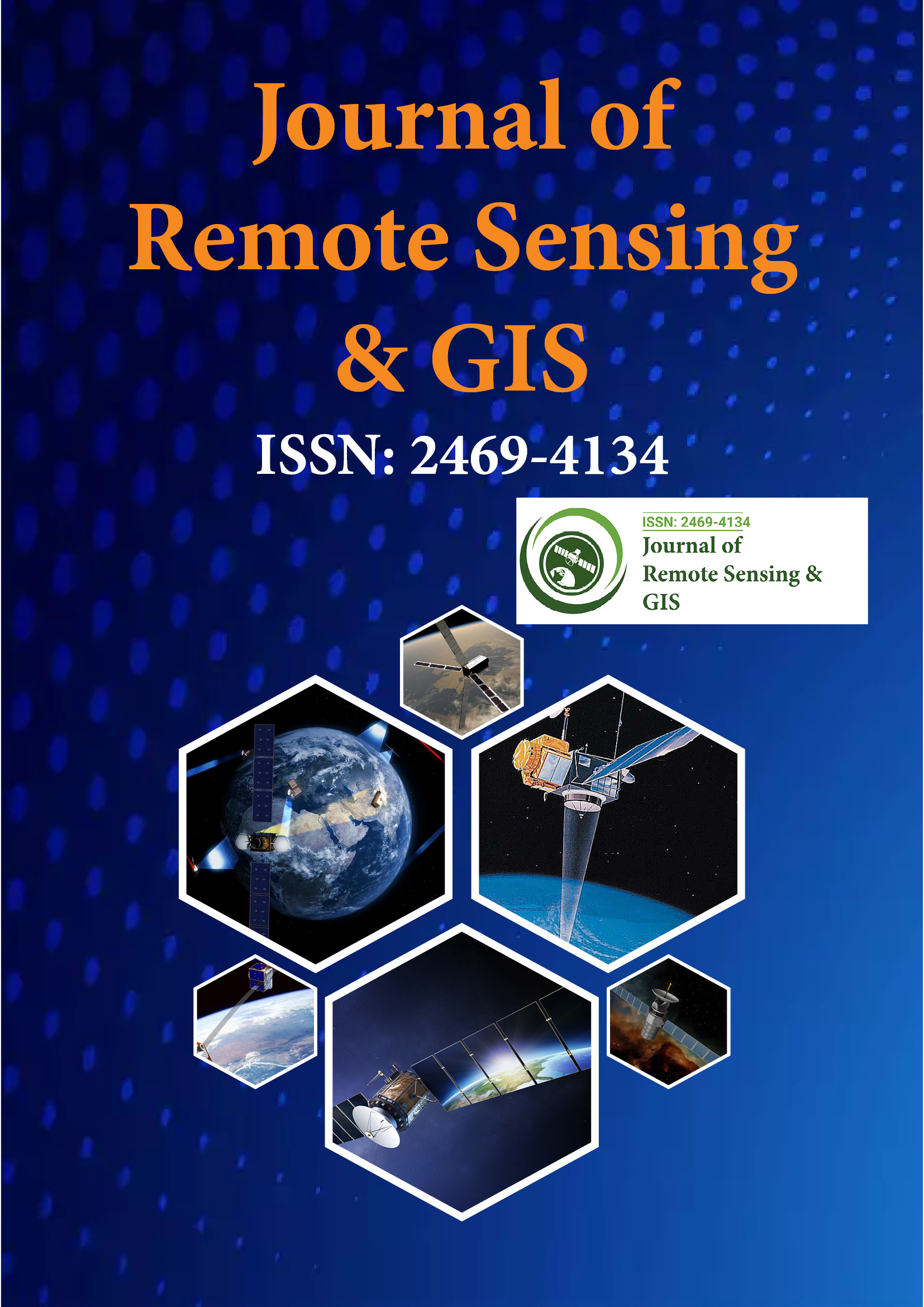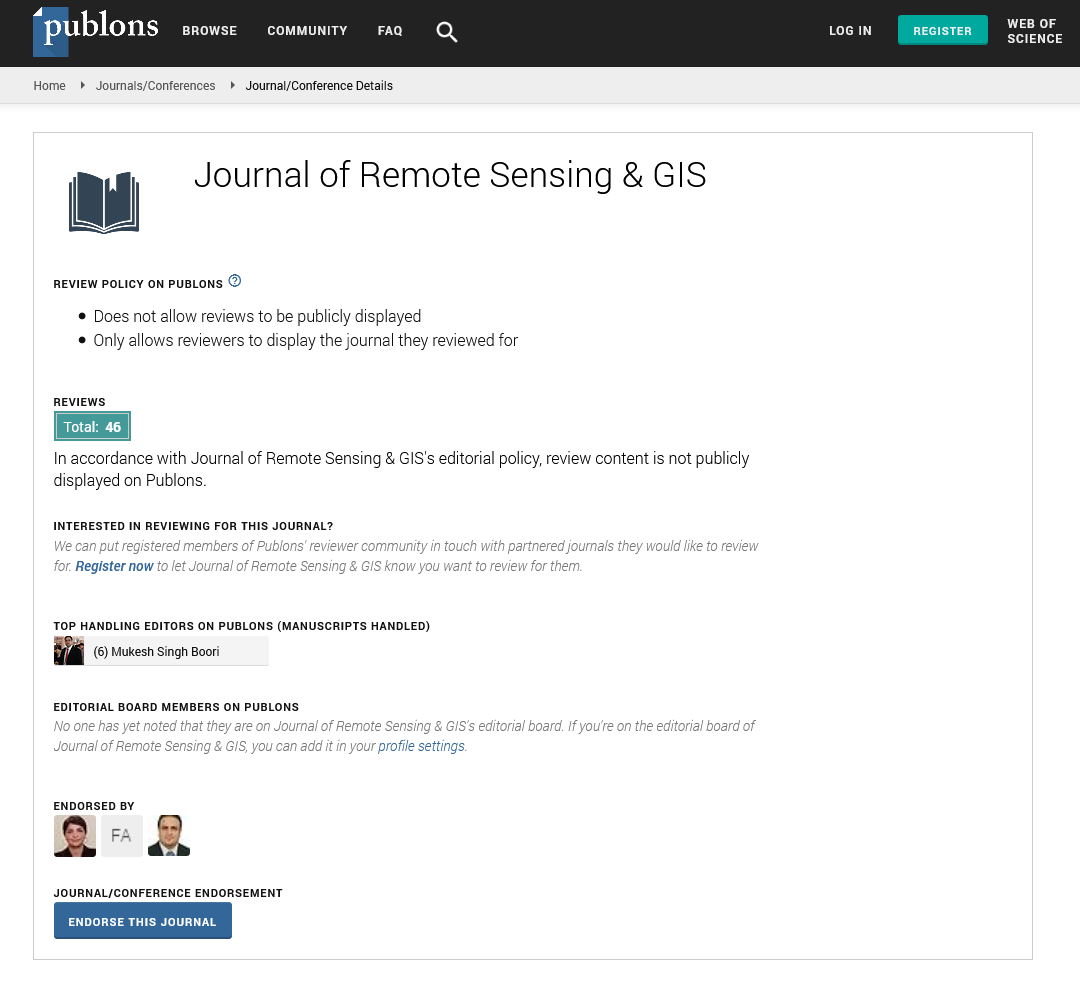Indexed In
- Open J Gate
- RefSeek
- Hamdard University
- EBSCO A-Z
- OCLC- WorldCat
- Publons
- International Scientific Indexing
- Euro Pub
- Google Scholar
Useful Links
Share This Page
Journal Flyer

Open Access Journals
- Agri and Aquaculture
- Biochemistry
- Bioinformatics & Systems Biology
- Business & Management
- Chemistry
- Clinical Sciences
- Engineering
- Food & Nutrition
- General Science
- Genetics & Molecular Biology
- Immunology & Microbiology
- Medical Sciences
- Neuroscience & Psychology
- Nursing & Health Care
- Pharmaceutical Sciences
Opinion Article - (2023) Volume 12, Issue 3
Exploring the Synergy between Artificial Intelligence and Satellite Imagery Analysis to Enhance Contrail Detection
Knuth Rex*Received: 02-May-2023, Manuscript No. JGRS-23-21589; Editor assigned: 05-May-2023, Pre QC No. JGRS-23-21589(PQ); Reviewed: 19-May-2023, QC No. JGRS-23-21589; Revised: 26-May-2023, Manuscript No. JGRS-23-21589(R); Published: 02-Jun-2023, DOI: 10.35248/2469-4134.23.12.299
Description
The potential of artificial intelligence is vast and growing. In the field of satellite imagery analysis, AI can be used to detect and classify objects, as well as identify patterns and trends. In this article, we will explore one particular application of AI in satellite imagery analysis: using a Convolutional Neural Network (CNN) to detect contrails in satellite images. Contrail detection is a particularly challenging task due to their transient nature and the complexity of their appearance. A CNN-based approach can help reduce the amount of manual labor required for detecting and classifying contrails. This method has been successfully used by to detect contrails in satellite images from various sources, such as National Aeronautics and Space Administration (NASA's) Earth Observing System (EOS). In this article, we will discuss how a CNN-based approach works and why it is effective for detecting contrails in satellite images. We will also discuss some of the challenges associated with using this method and how they can be addressed. Finally, we will look at some examples of successful applications of this technique.
Convolutional Neural Networks (CNNs) are a type of artificial neural network used in computer vision tasks. They are specifically designed to process the input structure of images, videos, and other two-dimensional data. By learning these patterns over time, a CNN can accurately distinguish between clouds and contrails even when they appear in an image. In addition to their use in computer vision tasks, CNNs have also been applied to other areas such as robotics and speech recognition. With their ability to learn complex patterns from large amounts of data quickly and accurately, CNNs have become one of the most popular tools for innovating with AI technology today.
Artificial Intelligence (AI) has become increasingly important for the analysis of satellite imagery. One example of this is the use of Convolutional Neural Networks (CNNs) to detect contrails in satellite imagery, which can help to inform decisions made by scientists and experts in various industries. The use of CNNs for contrail detection offers several advantages over traditional methods, such as manual observation or pixel-by-pixel processing. By using CNNs, scientists can quickly and accurately identify contrails at a much larger scale than is possible with manual methods. In addition, CNNs are able to recognize patterns that may be difficult for a human to detect due to their complexity or size. This means that the results produced by CNNs are more reliable and accurate than those obtained through manual observation or pixel-by-pixel processing. Another benefit of using AI for contrail detection is that it can help reduce the amount of time and money spent on projects related to contrails. By using machine learning algorithms, can quickly identify areas where contrails are likely to be present without having to manually search through large amounts of data. By reducing the time and resources needed for these instances, they may instead concentrate their efforts on other areas like data processing and interpretation. This information can then be used by decision makers in various industries, such as aviation or energy production, to better prepare for any potential changes in the environment due to increased air travel or changes in weather patterns caused by climate change.
Overall, AI provides many benefits when it comes to analyzing satellite imagery related to contrail formation and detection. By using Convolutional Neural Networks (CNNs) can quickly identify areas where contrails are likely present while also reducing the amount of time and money spent on projects related to these phenomena. Additionally, AI models trained on large datasets containing historical data about contrail formation can help improve the accuracy and reliability of predictions made about future behavior or trends related to these phenomena.
AI and satellite imagery have become important tools in detecting contrails. By combining the two, we can achieve a more accurate result than with either tool alone. Utilizing AI to process data from satellite imagery has the potential to revolutionize the way contrails are detected and monitored. Using a Convolutional Neural Network (CNN) allows us to identify contrails in the satellite images with greater accuracy than traditional methods. The CNN is able to analyze multiple layers of data simultaneously, making it ideal for this type of detection. Additionally, the CNN can reduce false positives as it is trained on a large dataset of labeled images and can recognize patterns that may be difficult for humans to detect. AI-based techniques with satellite imagery provide a powerful tool for detecting contrails more accurately and efficiently than traditional methods. By combining these two technologies, we can gain insight into our environment that would otherwise be difficult or impossible to obtain without them.
Citation: Rex K (2023) Exploring the Synergy between Artificial Intelligence and Satellite Imagery Analysis to Enhance Contrail Detection. J Remote Sens GIS. 12:299.
Copyright: © 2023 Rex K. This is an open-access article distributed under the terms of the Creative Commons Attribution License, which permits unrestricted use, distribution, and reproduction in any medium, provided the original author and source are credited.

